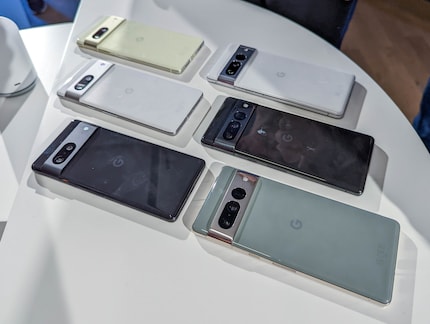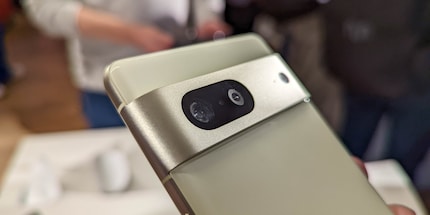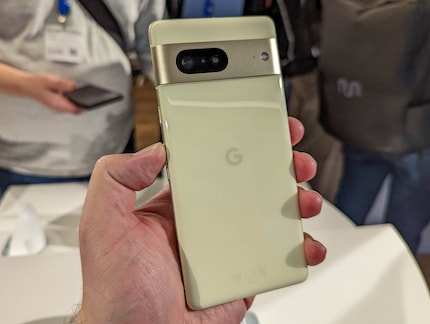
Pixel 7 Pro and Pixel 7 unveiled: small and big changes
Google has presented its next smartphone generation with the Pixel 7 and Pixel 7 Pro, which has changed little visually and a little technically. The big innovations are in the software.
Improved zoom, face recognition and Cinematic Blur are just some of the new features of the Pixel 7 and Pixel 7 Pro. The biggest changes are software-based, partly requiring the new Tensor G2 chipset and therefore not coming to older Pixel models.
Pixel 7 and 7 Pro
Optically, little has changed. The design with the full-width camera hump remains the same. The colour selection changes and becomes less colourful. On the Pixel 7 Pro, the aluminium of the frame and camera bump is glossy, while on the Pixel 7 it is matte.

At 6.3 inches, the Pixel 7's display will be 0.1 inches smaller than its predecessor and 25 per cent brighter. The other values remain unchanged. For the Pixel 7, this means an OLED display with 2400 × 1080 pixels and a refresh rate of up to 90 hertz. For the 6.7-inch Pixel 7 Pro, it's 3120 × 1080 pixels and up to 120 hertz.
Under the bonnet, the Tensor G2, the second generation of Google's own processor, is the most important change. Machine learning, what passes for artificial intelligence in others, is said to become up to 60 per cent faster and require 20 per cent less energy with it.
Minimal changes to camera hardware, all the more to software
In terms of cameras, the Pixel 7 in particular benefits from an improved front-facing camera to 10.8 megapixels, which Google is not only using for selfies but also bringing back facial recognition. The telephoto camera, which only the Pixel 7 Pro has, continues to have 48 megapixels and offers five times optical zoom (Pro Level Zoom) and up to 30 times digital zoom. Google works with some tricks when it comes to zoom and, for example, uses only 12.5 megapixels in the main camera with 50 megapixels to create a twofold zoom (Super Res Zoom). Together with software improvements, it should look as good as an optical zoom.

The Pixel 7 Pro's wide-angle camera gets an even wider 125-degree field of view, and Google now uses it for macro photos. The big promise when the smartphones were unveiled was that they could use it to replace a DSLR with different lenses. We shall see.
Other than that, Google has further improved Real Tone, the function for the realistic recording of skin colours, and offers "Guided Frame", an assistance function that helps blind and visually impaired people take selfies through voice instructions. On the other hand, the night mode, which works twice as fast, and the Photo Blur, which makes blurred photos sharp afterwards, again mainly benefit sighted people.

For videos, Google introduces "Cinematic Blur". In other words, depth of field like in cinema films, analogous to Cinematic Mode, which Apple has offered since the iPhone 13. This function, like 10-bit HDR, is tied to the Tensor G2. The increase to 4K and 60 FPS very likely is too.
More improvements promised
Later this year, "Clear Calling" will improve the voice quality of phone calls. Google will use machine learning to filter out background noise. Those who don't want to listen to voice messages can have them converted into text by Google in the corresponding app - hopefully not only in English.

The Pixel 7 comes with Android 13, and Google promises to provide it with security updates for five years. The manufacturer did not provide details on the number of Android versions to be released. Instead, it referred to its "Pixel Feature Drops", which brings new features to its smartphones every few months. This includes, for example, an integrated VPN function, which is expected to appear soon.
Price and availability
The Pixel 7 and Pixel 7 Pro are available for pre-order in Germany now and sales will start on 12 October. They have the same prices as the previous models a year ago. That means the recommended retail prices start at 649 and 899 euros.
Switzerland is still not one of the countries where Google is actively selling the devices. But I hope that they will make their way across the border as they have in the past.
When I was but a young student, I'd sit in my friend's living room with all my classmates and play on his SuperNES. Since then I've had the opportunity to test out all the newest technology for you. I've done reviews at Curved, Computer Bild and Netzwelt, and have now arrived at Galaxus.de.